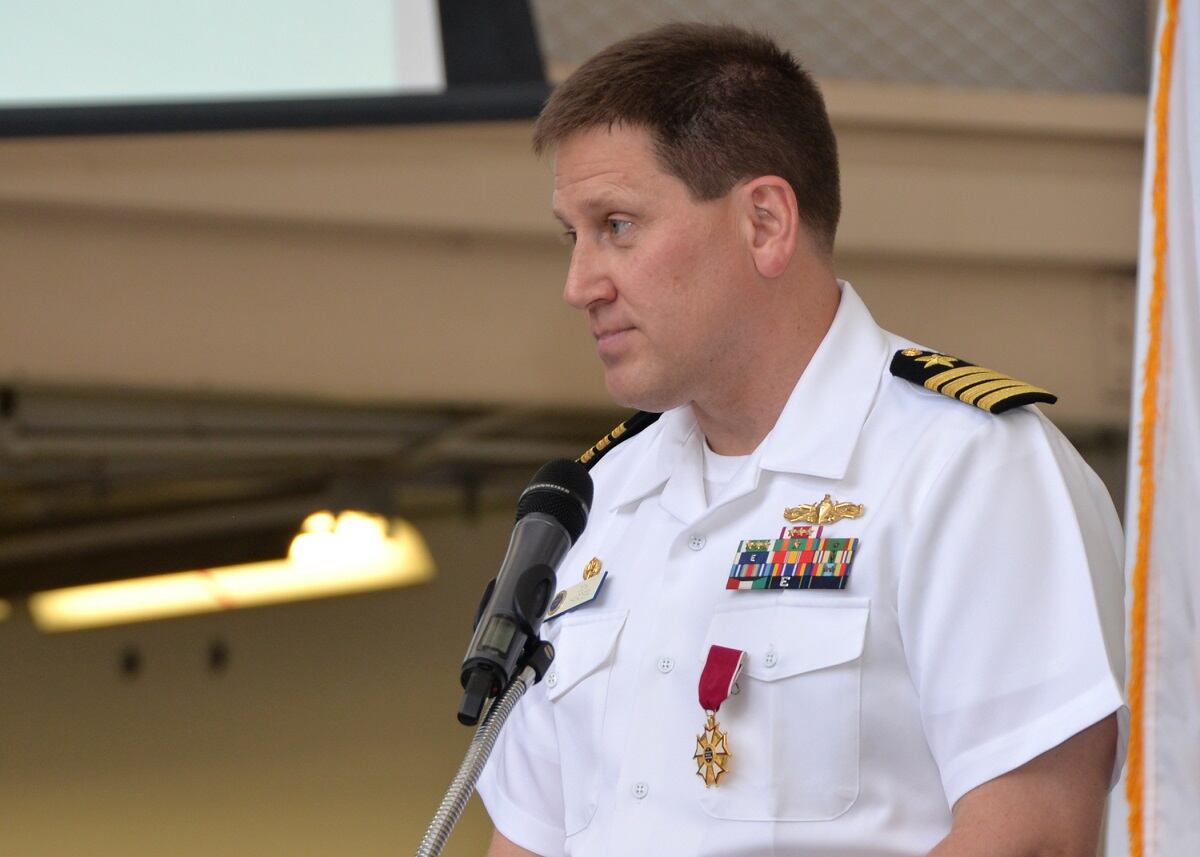The Navy’s Next Generation Enterprise Networks Recompete has been one of the most closely watched information technology contracts of the past year. The follow-on to the $3.5 billion NGEN program is designed to meet changing requirements, and the process for drafting the request for proposals actively engaged industry. The “open door” development process deviates from traditional approaches, Capt. Don Harder, deputy program executive officer for Navy Enterprise Information Systems, told Federal Times editor Amber Corrin in a recent interview. (The final RFP was expected in July, but at press time was not yet released.)
The original NGEN contract was a brand-new approach, designed from the ground up. With that already in place this time around, why the change in strategy?
I THINK SOME MAY have thought it was just rebound with the old contract, “it’s already written, we’re working on it, it’s okay, it’s good enough, just repeat it.” I quickly discovered that we were in need of an evolutionary approach, as opposed to a sustainment type of approach. The previous contract had its own program office develop it. We had a very small team, because the original thought was to just take the old, change some words and move forward.
So, with a very small team, we’ve taken the last year to drive from a standing start of document generation. Even though there had been many discussions over the year before that, in terms of what the Navy wanted to do and some conceptual acquisition strategies associated with it, there had not been a lot of work in terms of generating the documents.
We went in a direction of, what are the needs of the Navy networks in the future? How would they be provided in terms of how the current contract is written, as opposed to what we think we need to change in the future contract in order to achieve those outcomes?
How have the needs, requirements and demands all changed, given that you’ve essentially started the process over again?
IT’S THE INCORPORATION OF modern industry capabilities. Achieving faster solutions. Utilization of technically acceptable solutions to modern network problems. Those are the big drivers for us right now. And you start getting into specifics such as the desire for hybrid cloud solutions, unified communications, optical transport, expansion of the virtual infrastructure, bandwidth optimization.
And probably one of the bigger ones is network integration into [Navy-Marine Corps Intranet, the Navy’s legacy enterprise network]. You throw on top of all of that the more mundane sustainment issues such as end-of-life issues or tech refresh issues.
How do we evolve then from what we had in the past and what we need in the future? The current contract is achieving the objectives that were set forth for it in terms of sustainment of the network and maintaining the status quo.
We took a very different approach because we recognized that in order to achieve the outcomes that I just mentioned, we could take one of two ways doing this. One way would be to dictate the approach — and I’m very much philosophically against that approach because that presumes that we know the one correct answer.
We’ve written into the contract a desire to see industry propose a process that would help us achieve the outcomes. So, as opposed to being a solution-directed type of contract, this is now an outcome-based type of contract. In easy terms, we’re getting away from “how I want them to do it” to “here are the eight or 10 big-ticket objective outcomes that we’re looking for from the network.” We recognize that the network infrastructure today will not allow for those capabilities to be met without any kind of drastic decrease in efficiency or effectiveness of the network.
What we’re asking for industry to provide to us will be their attempt to state, “Here’s the way we want to ensure that flexibility, optimization, effectiveness of the network is maintained as those types of needs and desires and requirements change or evolve over the next many years.”
How do you approach pricing and budget, and also communication, when it comes to this requirement for significant flexibility?
THE CONCERN IS ALWAYS how quickly can we move out on these and what are the budget implications of those types of changes and needs and desires?
So, again, as opposed to asking for a simple price on what are the network services going to cost us, we’re asking for a process that allows the cost component of it to be somewhat flexible as well. Now, what I mean by that is when we ask for a five-year plan, we’re looking for notional descriptions of projects that industry would recommend in order to achieve the outcomes that we’ve stated, as opposed to getting it once and once only, and then moving forward and being stuck with it.
We envision [monthly sessions] with the vendor, the government and then everyone else we feel needs to be part of the conversation. We’ll sit down and talk about whether there have been any changes to the government’s priorities. Have there been any incidents that require additional attention? Has there been any new knowledge gained by either the vendor or the government or another external entity that would influence that plan?
This will be a continuous process that allows the government to come in and ask the vendor questions. “There’s a new capability government wants to implement. We’re in a budget-constrained environment. So, what are the options available to us?” Let’s sit down and have that conversation.
If we allow ourselves the flexibility to achieve those kinds of innovative or creative solutions to continue to occur post-contract award, then we have allowed ourselves the ability now on the government side to quickly implement new capabilities based on the changing world environment.
We hear a lot about the culture change, particularly in government, that’s needed in order to be more efficient in buying IT and implementing more cutting-edge technologies. What are you seeing, in that regard?
GOVERNMENT IS USED TO buying commodity. And, as we shift mentality from buying a commodity to buying a service, we have to understand that when buying a service in a government-owned network environment where the contractor is helping to operate that network, it’s different than trying to figure out the difference between Sprint and AT&T for your cellphone. There are those intangibles that we need to be aware of in terms of what different industry vendors can bring to the table to help us achieve those end-stage outcomes.
To be honest, it’s been somewhat difficult sometimes to ensure that everybody on the government side understands that change in mentality. I’m not dictating everything that you do for me. I’m asking you to provide me the process — your recommendation for a process — that we can then have a discussion about and then, the flexibility to change post-contract award.
This is how industry kind of does business today anyway. So, industry’s used to it. On the government side, maybe not so much. But that’s changing now and we’re seeing more people on the government side — leadership as well as the execution team, the day-to-day operations folks — understanding that concept and understanding that yes, this is a little bit of an evolutionary way of gaining that service.
It’s pretty well-known there’s been a lot of industry engagement in developing this contract — more than is typical. Can you talk a little bit about what has happened in the process?
I’VE ALWAYS BEEN VERY enamored with a close, professional relationship with industry when it comes to the development of contracts that are geared to achieve a specific objective for the government. A lot of people use the “win-win” terminology all the time. I look at it a little bit differently. I look to build a solid business relationship with industry in which they understand what my objectives are and my priorities are, and I understand what motivates them, as well.
There has been an open door, so to speak, where they can provide direct feedback via email to us … and this has helped tremendously because we found where we have made changes to verbiage and we get immediate feedback from industry on how they’re reading the intent. And they come back with a question, “Did you really intend for this? Because this is how we perceive it.” And we’re like, “No, no, that’s not what we meant. We thought it was a simple change over. We didn’t understand that there was an unintended consequence to it someplace else.”
So, that feedback has been just tremendous for us to ensure that we’re driving toward an industry concurrence [with] what we’re writing down.





